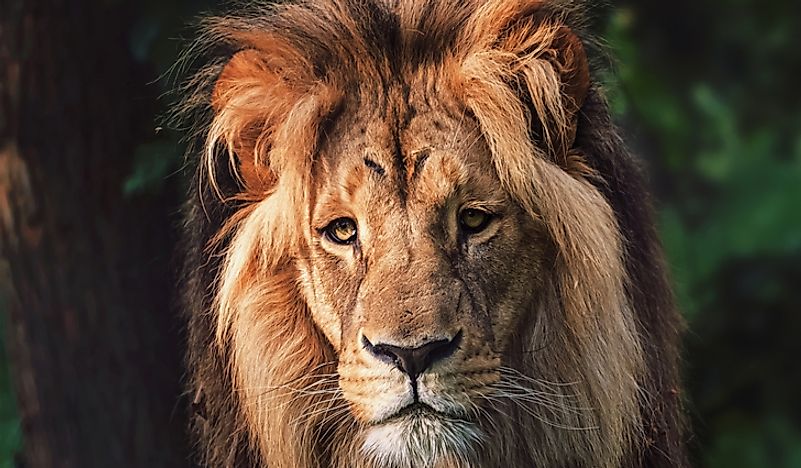Southwest African Lion Facts: Animals of Africa

4. Physical Description
The Southwest African Lion is one of the largest lion subspecies to be found today. Their bodies and fur tend to be of a singular color, lacking the rosettes and stripes common among tigers, leopards, and jaguars. The color of their mane is affected by their testosterone levels, and it starts out lighter among young cubs and subsequently darkens as they mature. Fully matured adult males are usually around 8.2 to 9.8 feet (2.5 to 3 meters) long. The females are a bit smaller, at 7.5 to 8.5 feet (2.3 to 2.6 meters). Male cubs average around 170 pounds (77 kilograms) in weight, and females tend to weigh 20% less than males. Adult male weights around 309-534 pounds (140-242 kilograms) while the females weigh between 231 and 375 pounds (105 and 170 kilograms). They have a shoulder height of around 3 to 4 feet (0.9-1.2 meters) when standing on all fours.
3. Diet
The Southwest African Lion is obligatory carnivorous. Their diet consists of other large animals sharing their habitats, such as zebras, warthogs, antelopes, and wildebeests. They are coordinated hunters and hunt in packs. Male lions do not hunt, and instead watch the cubs while the lionesses are hunting. Lions hunt by encircling herds of prey and rushing its weakest members, maintaining a bite on their neck until eventually strangling them. Despite that, they are usually content to scavenge, preferring to eat dead animals already killed by other predators and natural events. They do so by watching the skies for vultures circling around to find carrion to eat. Lions do not have much stamina, and are better sprinters than endurance runners. To combat this, they try to sneak around or hunt during night to secure their prey in surprise attacks.
2. Habitat and Range
This subspecies of lion is endemic to Southwest Africa. It is found in the Democratic Republic of the Congo, Angola, Namibia, the western sections of Zambia and Zimbabwe, and the northern regions of Botswana. The United States has classified this and other African Lion species as endangered. They received global media attention in 2015 after an American dentist went on a hunt and killed a well-known Southwest African Lion, named “Cecil the Lion”, in Zimbabwe. While not under the immediate threat of extinction, their population has been dwindling since the early 1980s. Their habitat is being encroached upon by nearby human land development, and human hunting keeps their natural prey at levels unsustainable to support the lions’ dietary requirements.
1. Behavior
Southwest African Lions are social creatures. They create group called “prides”, with the female lions (“lionesses”) as the mainstay authoritarians of the groups. Lionesses are hostile to other lionesses outside their pride. Membership status within a pride is generally constant and stable, only changing once a lead lioness dies. They are territorial, with the males constantly patrolling their pride area for intruders. Large prey that are killed are dragged back to the pride area are shared with the other group members. Despite such social cohesion, members of a pride are often aggressive with one other. While consuming their prey, each lion tries to eat as much as possible in a race against the others.







